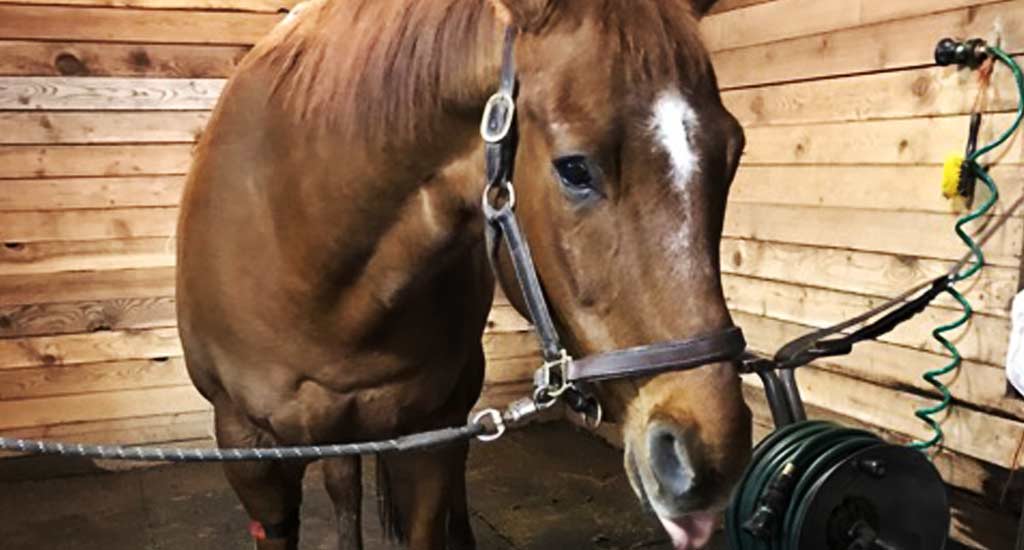Hoof Abscesses: Treated with MCT and Soaking Boot
This spring has been the perfect recipe for hoof abscesses due to the excessive rain and mud. As soon as CJ walked in from the pasture, dead lame on his right front, when he had been fine earlier, I knew the likely culprit was an abscess.
Our farrier was scheduled to come to the barn in a few days, and I knew he could confirm or deny this assumption. So, I decided to treat him with microcurrent therapy (MCT) like I would most injuries.
To treat an abscess with MCT, you can stick an electrode on the bottom of the horse’s hoof and then return to the bulb of the heels, but I prefer the soaking boot method. Once a day, I soaked CJ’s hoof in the soaking boot with warm water and Epsom salts and then dropped the wires connected to the microcurrent unit into the water.
After the first two treatments, CJ was significantly more comfortable and almost entirely sound. When the farrier came to the barn and used the hoof testers, he confirmed that we were indeed dealing with an abscess. While he was trimming the hoof, the abscess opened with a slight flick of his hoof knife. I continued the treatments for a few more days to ensure that everything was completely drawn out.
CJ received his MCT and soaking boot treatment, licking in enjoyment.
A couple of weeks later, my other gelding, Django, presented with the all-too-familiar “sound one day, dead lame the next” symptoms, so I proceeded the same way, using the soaking boot with MCT. After a few days of treatment, Django was still uncomfortable. My farrier came out and confirmed he had an abscess as well. However, he was higher up and not ready to open then.
Once I knew that we were dealing with an abscess and nothing else, I upped the ante with our treatment protocol and added light therapy using my SL-50 Laser Light. I would soak his hoof with the MCT in the morning and then use the SL-50 (retired and replaced by VCL 100) Laser at the bottom of his hoof in the evening.
Each day, he slowly got better. After two weeks of treatment, Django was sound and happy and got the all-clear from our farrier, saying that the abscess had drained and everything was looking great!
When people hear about or see me performing this type of treatment, the most frequently asked question is: “Does this shock the horse?” The answer is no. Microcurrent is low-voltage and does not shock the horse at all. This particular use of microcurrent helps because water and salt are excellent conductors, allowing the microcurrent to either help draw out the abscess or help the body disperse the toxic fluid internally.
I have learned the hard way to deal with abscesses, and I prefer handling them with the use of MCT and light therapy with the guidance of my farrier first, as opposed to calling the vet out right away. Veterinarians are taught to dig the abscess out immediately, and then it is up to the owner to keep the hoof clean and wrapped; in this case, the risk of infection is high.
One older horse in my barn had a veterinarian dig an abscess out of his hoof; he was left with a deep hole and never recovered. In the case of Django, with how long his abscess took to drain, if I had let someone dig it out, this would have left him with a hole in his hoof that would have taken many weeks to months to heal completely.
Now, both boys are sound and happy, and I didn’t have to worry about trying to keep their hooves wrapped up and the potential for infection.
2024, edited

